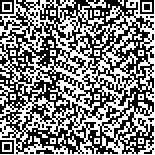| 引用本文: | 耿沙沙,刘 晨,张少宁,周成旭,叶央芳,骆其君,严小军.不同海洋微藻对石油污染的响应差异[J].海洋科学,2016,40(6):62-71. |
| |
|
| 摘要: |
| 微藻对油污染物的不同响应, 势必造成其群落种类组成和结构的变化, 进一步影响海洋生态系统的变迁。由于油污染对于浮游植物的影响具有污染源及生物响应的多样性、多维度性和复杂性, 产生影响的时效长但可显示度低等特点, 造成该研究领域的极大限制。作者以石油标准品20-3和3种石油化学品(双酚、对苯二甲酸、对二甲苯)作为油污染源, 利用多孔板高通量检测方法及大数据处理分析软件Simca-P, 对中国沿海常见单种微型藻类的种群消长受油污染影响进行了研究。以石油标准品20-3为油污染源, 分析了31株微藻增殖对不同油标浓度的不同响应; 利用Simca-P软件对3种不同浓度的石油化学品对4种典型微藻(柔弱角刺藻(Chaetoceros debilis)、球等鞭金藻(Isochrysis galbana)、东海原甲藻(Prorocentrum donghaiense)、剧毒卡罗藻(Karlodinum veneficum))增殖的影响进行了比较分析。研究结果显示: 不同种类微藻因油污种类及其浓度不同, 其响应存在显著差异。利用多孔板以及微藻的吸光特征, 可以高通量快速筛查不同微藻对不同油污及其不同浓度的响应差异, 并利用计算机软件对大数据的分析能力, 挖掘和比较不同微藻与不同油污之间的相互关系, 从而就油污染对微藻影响这种多维度复杂关系进行研究。 |
| 关键词: 海洋微藻 油污染 种群增殖 大数据 |
| DOI:10.11759//hykx20150812003 |
| 分类号: |
| 基金项目:中国国家科技部星火计划项目(2015GA701001); 浙江省自然科学基金资助项目(LY12D06001); 国家公益性行业(海洋)科研专项经费项目(201105009); 海洋可再生能源专项资金项目(GHME2001SW02); 国家“万人计划”(财教[2014] 412 号) |
|
| Differences in the response of different marine microalgae to oil pollution |
|
GENG Sha-sha,LIU Chen,ZHANG Shao-ning,ZHOU Cheng-xu,YE Yang-fang,LUO Qi-jun,YAN Xiao-jun
|
| Abstract: |
| Microalgae are a fundamental component of aquatic food web. Oil spills or the release of other sources of hydrocarbons into the marine environments account for most of the organic pollution that occurs in coastal areas. Different species of microalgae will respond differently to oil pollution, producing different downstream effects on phytoplankton communities and possibly reshaping marine ecosystems. Research into the response of different marine microalgae to oil pollution has largely been held back by the high degree of complexity that exists in the relationship between various phytoplankton species and the many different oil pollution scenarios that are possible. The present study uses a high-throughput screening method to examine the responses of different microalgae to oil pollution. This is accomplished using oil standard 20-3 and 3 oil chemical products: bisphenol, terephthalic acid, and paraxylene, as sources of oil pollution together with 30 strains of microalgae isolated from the coastal area of China. For the first time, principle component analysis (PCA) based on Simca-P software was used to analyze a large data set measuring population growth of microalgae over 72 h in the presence of various oil pollutants. The resultsshow that the growth of different strains of microalgae was affected differently by the oil pollutants and the effect of oil pollutants was concentration-dependent. Multiwell culture plates, e.g., 24-well plate, were efficient growth vehicles for algae growth when used in the high-throughput screening procedure. Analysis of this large data set showing microalgal population growth in response to various oil pollutants of different concentration can be performedeffectively by applying the method of PCA based on the computer software Simca-P. |
| Key words: Marine microalgae oil pollution population growth big data |
